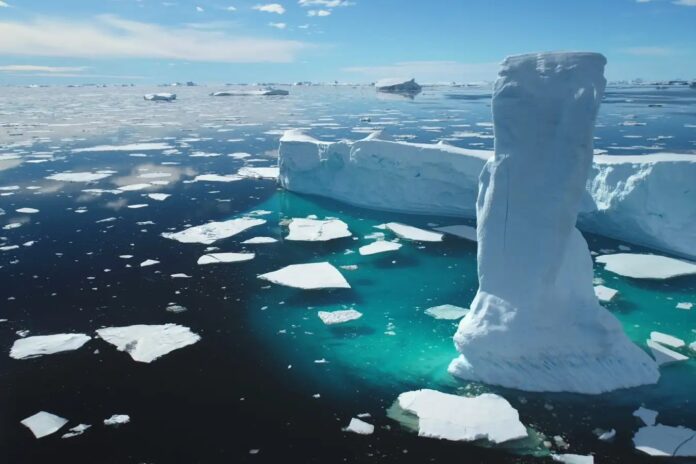The Arctic Ocean, long considered one of Earth’s last frontiers against rapid warming, is now experiencing significant temperature increases even at extreme depths. Recent research reveals that warmer Atlantic water flowing near Greenland is heating up the deepest parts of the Arctic, challenging previous assumptions about climate change’s reach.
The Scale of the Warming
For decades, shrinking Arctic sea ice — down roughly 40% in the last four decades due to atmospheric warming — was the primary visible sign of climate stress in the region. However, new analysis by researchers at the Ocean University of China, using data collected from icebreaker expeditions, shows that the warming is now penetrating far deeper than previously understood.
In the Eurasian basin, one of the Arctic Ocean’s two major divisions, waters between 1,500 and 2,600 meters deep have warmed by 0.074°C since 1990. While seemingly small, this represents a massive energy transfer: almost 500 trillion megajoules. To put this into perspective, that energy, if concentrated at the surface, could melt up to a third of the Arctic’s minimum sea ice extent.
“The deep ocean is much more active than what we thought,” notes Xianyao Chen, a researcher on the team. “I thought the deep ocean could be warming, but not so fast.”
How the Warming Happens
The Arctic Ocean is divided by an underwater mountain range running from Greenland to Siberia. The Eurasian basin is particularly vulnerable because it receives warmer Atlantic water via an extension of the Atlantic Meridional Overturning Circulation (AMOC), a major ocean current system. As seawater freezes, salt is expelled, creating dense, sinking water that carries this warmth to the depths.
Geothermal heat from the Earth’s core also plays a role in warming these deep waters. However, a key factor is the accelerated melting of the Greenland ice sheet. This introduces freshwater into the Greenland basin, which slows the sinking of cold, salty water that previously helped offset the warming from below. As a result, the Greenland basin’s deep water temperature has risen rapidly – from -1.1°C to -0.7°C.
Why This Matters
This warming is not merely an isolated phenomenon. The combined effect of geothermal heat, sinking Atlantic water, and reduced cooling from Greenland is creating a feedback loop that amplifies warming throughout the Arctic Ocean depths.
Researchers warn this could eventually contribute to further sea ice melt or even thaw sub-sea permafrost. Critically, this permafrost contains methane clathrates — ice-like deposits that, if disturbed, could release vast quantities of methane into the atmosphere. The release of methane, a potent greenhouse gas, could accelerate global warming at a dangerous rate, with some scientists linking similar events to past mass extinction events like the Permian extinction.
This discovery underscores that climate change is impacting even the most remote and previously stable parts of our planet, highlighting the urgency of global efforts to reduce greenhouse gas emissions.
The Arctic’s deep ocean, once thought insulated from rapid change, is now fully implicated in the unfolding climate crisis.





























